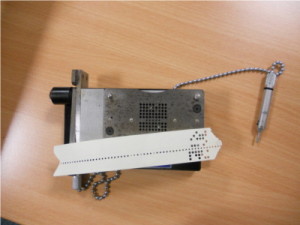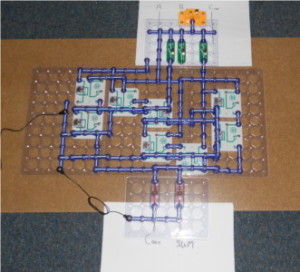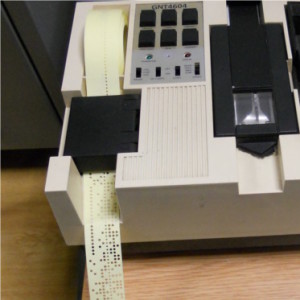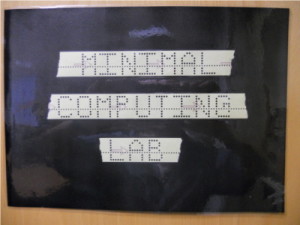 As computer systems get increasingly sophisticated, the experiences of users — even specialist ones working in the digital humanities — are increasingly abstracted from the underlying electrical and mechanical operations of computers. Underneath everything there are only zeroes and ones travelling through machines. Building on the work of the Minimal Computing Lab at the Centre for Textual Studies at De Montfort University, this session seeks to encourage play and making at the lowest possible level of abstraction, to remind digital humanists of what computers are doing with binary operations and think about how these activities might be explained. In particular, we will try out various practical experiments that might be suitable for conveying to a wider audience — our non-digital peers in the humanities and the general public — just what it is that these machines do.
As computer systems get increasingly sophisticated, the experiences of users — even specialist ones working in the digital humanities — are increasingly abstracted from the underlying electrical and mechanical operations of computers. Underneath everything there are only zeroes and ones travelling through machines. Building on the work of the Minimal Computing Lab at the Centre for Textual Studies at De Montfort University, this session seeks to encourage play and making at the lowest possible level of abstraction, to remind digital humanists of what computers are doing with binary operations and think about how these activities might be explained. In particular, we will try out various practical experiments that might be suitable for conveying to a wider audience — our non-digital peers in the humanities and the general public — just what it is that these machines do.
 A fundamental mystery underpins much of today’s work in digital humanities: just how is it that a machine can store and process language? To help dispel the mystery we return to the mechanical and electrical level of binary operations, leaving aside the usual mathematical accounts to look at what happens when human language is encoded in this form.
A fundamental mystery underpins much of today’s work in digital humanities: just how is it that a machine can store and process language? To help dispel the mystery we return to the mechanical and electrical level of binary operations, leaving aside the usual mathematical accounts to look at what happens when human language is encoded in this form.
What is it about computers that we need to explain to non-specialists when we are thinking this ‘close to the metal’? The building blocks of all our computers are logic gates, memory, and data storage. Using hands-on experimentation with simple electrical circuits (for gates and memory) and paper-tape (for data storage), the session will attempt to think through just how we might best help those who are entirely baffled by the digitization of our field to get a grounding in the use of machines for cultural work. The premise being explored here is that it is best not to start with programming environments like Scratch or Python, or high-level encoding standards like XML and TEI, that run within highly complex operating systems whose operations we fail to explain. Instead we should begin with noughts and ones and how current flowing in wires and marks in physical media can represent the two fundamental numbers, 0 and 1, that we use to encode language.
 As well as hands-on experimentation with old computer equipment, the session will consider whether we can ‘perform’ various aspects of computer operations using actors. We will experiment with sending messages across the room in binary using physical props (flags, hats, lamps) and with the human body standing in for various parts of the computer as it performs its functions. This work is suitable for anyone willing to get up and follow simple instructions: no acting ability is required or even desirable.
As well as hands-on experimentation with old computer equipment, the session will consider whether we can ‘perform’ various aspects of computer operations using actors. We will experiment with sending messages across the room in binary using physical props (flags, hats, lamps) and with the human body standing in for various parts of the computer as it performs its functions. This work is suitable for anyone willing to get up and follow simple instructions: no acting ability is required or even desirable.


